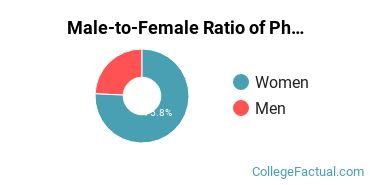 by our College Data Analytics Team
by our College Data Analytics TeamPhysical Therapy/Therapist is a concentration offered under the rehabilitation and therapeutic professions major at University of Colorado Denver/Anschutz Medical Campus. Here, you’ll find out more about the major doctor’s degree program in physical therapy, including such details as the number of graduates, diversity of students, and more.
If there’s something special you’re looking for, you can use one of the links below to find it:
In 2019-2020, the average part-time graduate tuition at CU Anschutz was $1,255 per credit hour for out-of-state students. The average for in-state students was $377 per credit hour. The average full-time tuition and fees for graduate students are shown in the table below.
| In State | Out of State | |
|---|---|---|
| Tuition | $6,786 | $22,590 |
| Fees | $1,325 | $1,325 |
Online degrees for the CU Anschutz physical therapy doctor’s degree program are not available at this time. To see if the school offers distance learning options in other areas, visit the CU Anschutz Online Learning page.
About 75.8% of the students who received their Doctorate in physical therapy in 2019-2020 were women. This is higher than the nationwide number of 62.7%.

Around 24.2% of physical therapy doctor’s degree recipients at CU Anschutz in 2019-2020 were awarded to racial-ethnic minorities*. This is about the same as the nationwide number of 24%.

| Race/Ethnicity | Number of Students |
|---|---|
| Asian | 3 |
| Black or African American | 2 |
| Hispanic or Latino | 3 |
| Native American or Alaska Native | 0 |
| Native Hawaiian or Pacific Islander | 0 |
| White | 49 |
| International Students | 0 |
| Other Races/Ethnicities | 9 |
You may also be interested in one of these majors related to physical therapy/therapist.
| Related Major | Annual Graduates |
|---|---|
| Rehabilitation Science | 1 |
View All Physical Therapy/Therapist Related Majors >
*The racial-ethnic minorities count is calculated by taking the total number of students and subtracting white students, international students, and students whose race/ethnicity was unknown. This number is then divided by the total number of students at the school to obtain the racial-ethnic minorities percentage.
More about our data sources and methodologies.